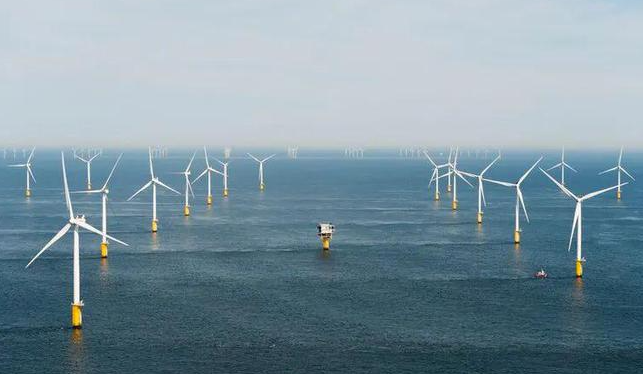The developer and the consultancy are developing the programme together with partners including WMR, WaterProof Marine Consultancy & Services B.V. and SEAMARCO. The collaboration will ensure ecology is given a prominent place in the preparation, construction and operation of the offshore wind farm, according to Eneco.
Ecowende secured the development rights in the Dutch tender for Hollandse Kust West VI in December 2022. Located 53 kilometres off the coast of IJmuiden, the 760 MW offshore wind farm will comprise 54 wind turbines and is said to be the first wind farm in the world that will be in harmony with nature.
Earlier this month, the developer entered into an agreement with Van Oord which will see the Dutch offshore construction company signing contracts for the installation of the wind farm’s foundations, inter-array cables and wind turbines.
The Ecowende joint venture will implement various innovations at the Hollandse Kust West VI offshore wind farm to boost the positive effects of the project and reduce its negative effects.
As reported in June, Shell and Eneco have presented some of the measures they plan to employ at the offshore wind farm, including increasing the height of the lowest tip of the rotor blades, creating a corridor to Natura 2000 area by placing the turbines extra far apart, as well as an option to bring the turbines to a standstill that adapts to the flight movements of birds in the wind farm.
Under the new collaboration with Waardenburg Ecology, the ecological consultancy and its partners will identify the actual impact of the innovations and large-scale measures in order to gain insight into what is effective and what is not.
Insight into the effectiveness of the measures will ensure the Ecowende wind farm contributes to the development of future wind farms that have a positive impact on nature, and will enable adjustments to be made where necessary, Eneco said in a press release on 26 September.
Jeroen Kwakkel, marine ecology consultant – project manager at Waardenburg Ecology, said that the programme will first involve studying the current state of the planning area before moving on to the impact on nature during the construction of the wind farm.
“Starting from 2025, we will monitor how nature develops both above the sea and underwater over the following 20 years. This will be monitored more intensively during the first seven years,” Jeroen Kwakkel said.
One of the main programme segments will focus on technologies tracking bird and bat behaviour and mitigating the offshore wind farm’s impact on these species.
“Our bird specialists will assess the effectiveness of different automatic systems for bird radars and long-range cameras, and will perform field observations to enable thorough assessments. We will attach transmitters to passerines in the Netherlands and great black-backed gulls in Norway with the aim of learning more about the behaviour of these birds at sea”, said Ruben Fijn, Bird Ecology Team Manager at Waardenburg Ecology.
“We will measure bird collisions and the effect of Ecowende’s innovations in order to improve collision avoidance models for birds. In addition, we will study how bats make use of the wind farm when migrating.”
Waardenburg Ecology will also study the effect of various underwater measures aimed at enhancing nature.
“Among other things, we will monitor the development of biodiversity on and near the seabed – examples include various nature-inclusive scour-protection designs – and carry out research into biogenic reefs. Such research might lead to new insights into possible ways to help reef-building species, such as sabellaria, develop or increase naturally,” said Hermione van Zutphen, ecology project manager at Ecowende.
